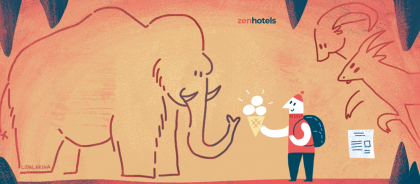Grotta Azzurra
- Where: Capri, Italy
- Opening times: open all year round. Entrance to the caves is from 9 am until 1 hour before sunset; a visit to the caves is often included in sightseeing tours around the island (from €22.00)
- Entrance: €15.00
- How to get there: by boat from the port of Marina Grande (€10,00)
No visit to Capri is complete without a visit to the Grotta Azzurra, sea caves which have been well-known since ancient times. Researchers have discovered the remains of ancient Roman statues here suggesting that these caves were once some kind of religious sanctuary.
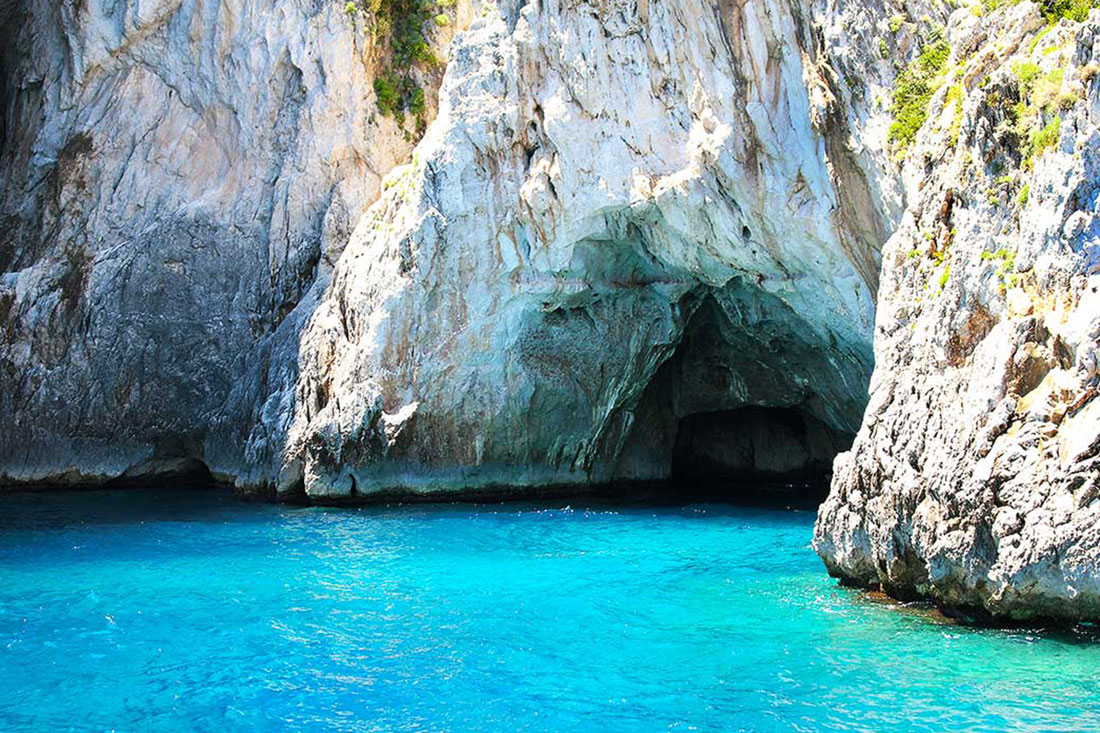
It’s probable that, like today’s tourists, the Romans were drawn here by the emerald blue light, an optical effect caused by the way the light is refracted through the surface of the water.
Ideon Andron
- Where: Crete, Greece
- Opening times: April-October from 8 am to 7 pm; closed at other times.
- Entrance: €3.00
- How to get there: By bus from Heraklion to Katafigio. Ticket costs €6.50.
Crete has many cave systems, and one of the best known is the Ideon Cave. Which was considered a sacred place by the ancient Greeks – in fact, according to their mythology, it was here that the god Rea hid the baby Zeus from the wrath of his father, the Titan Cronus, later deposed, who was pursuing him.
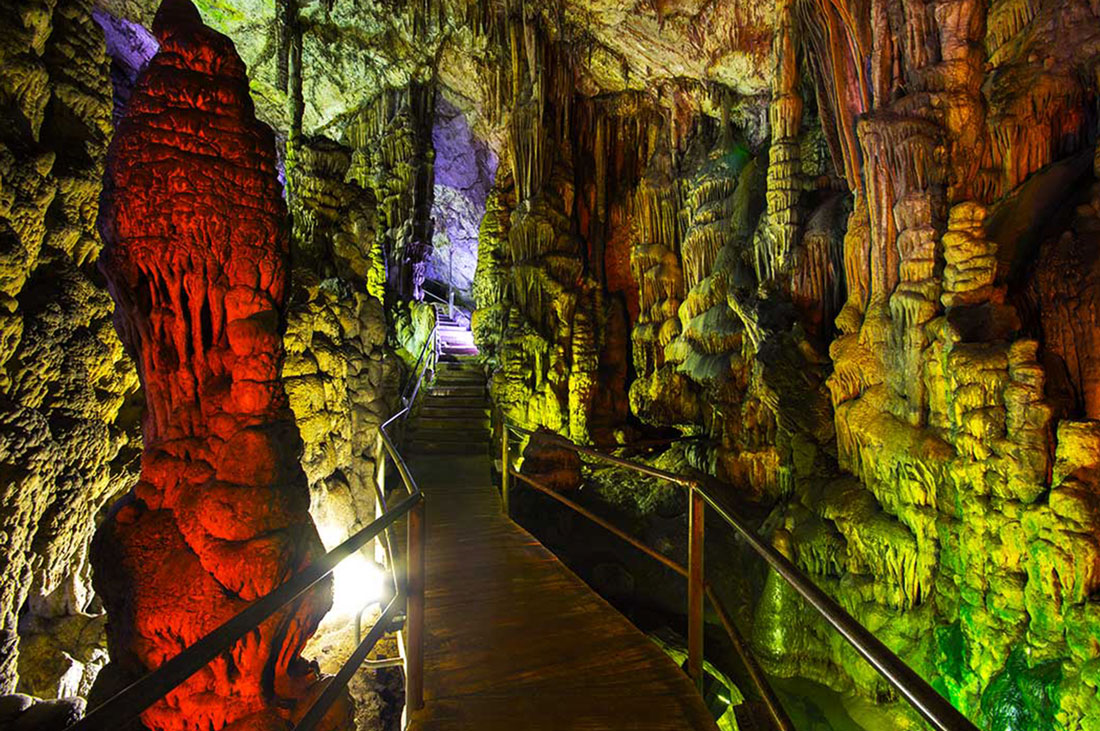
According to the legend, the Corybantes, priests of the Phrygian cults of Rea and Cibele, indulged in lavish rituals at the entrance to the cave, singing and dancing to cover the cries of the baby. The caves were studied by academics at the beginning of the 19th and 20th centuries and were identified as architecturally valuable relics from the Minoan epoch. There are steps down into the caves.
Dikteon Andron
- Where: Crete, Greece
- Opening times: from April to October, 8 am to 8 pm, 8 am to 3 pm in winter.
- Entrance: €6.50
- How to get there: by bus from Heraklion to the village of Psychro on the Lasithi Plateau.
Another jewel of Crete are the Dikteon caves above the Lasithi Plateau. These caves, like the ones at Ideon, are also linked to the legend of young Zeus. It is said that here in the Dikteon caves, Rhea gave birth to the future god of thunder and presented Cronus with a stone from the mountainside wrapped in swaddling instead of the baby.
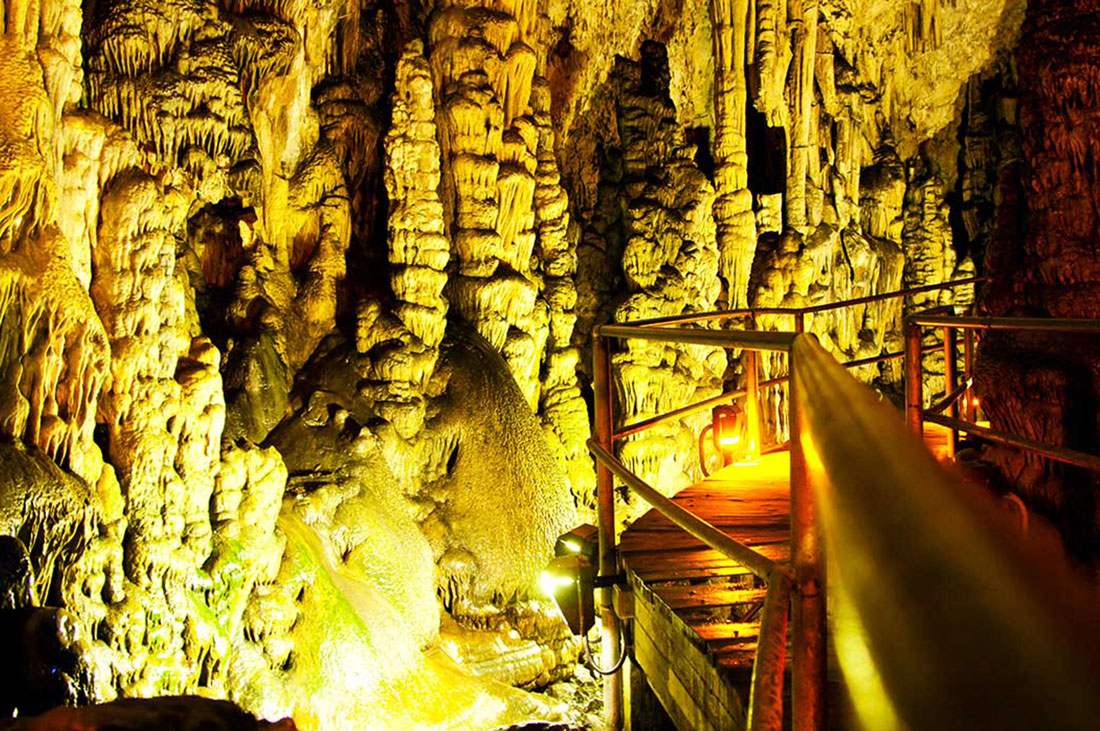
Minoan ceramic artifacts have been found here during excavations meaning that they have been worshipping Zeus here for more than 2000 years. You can see these finds in the Heraklion Archeological Museum (entrance costs €5.00 out of season, €10.00 in season) and the Ashmolean Museum in Oxford (UK) (free of charge). There are steps into the cave, and the interior is well lit.
Grotte de Rouffignac
- Where: Périgord, France
- Opening times: 10am-5pm from 13 April to 1 November; closed for the rest of the year.
- Entrance: €7.50
- How to get there: by taxi from Périgueux
The caves at Rouffignac in France have many nicknames, such as the “cradle of civilization” and “caves of a thousand mammoths”. These names come from the plethora of wall paintings showing the variety of ancient fauna of the time.
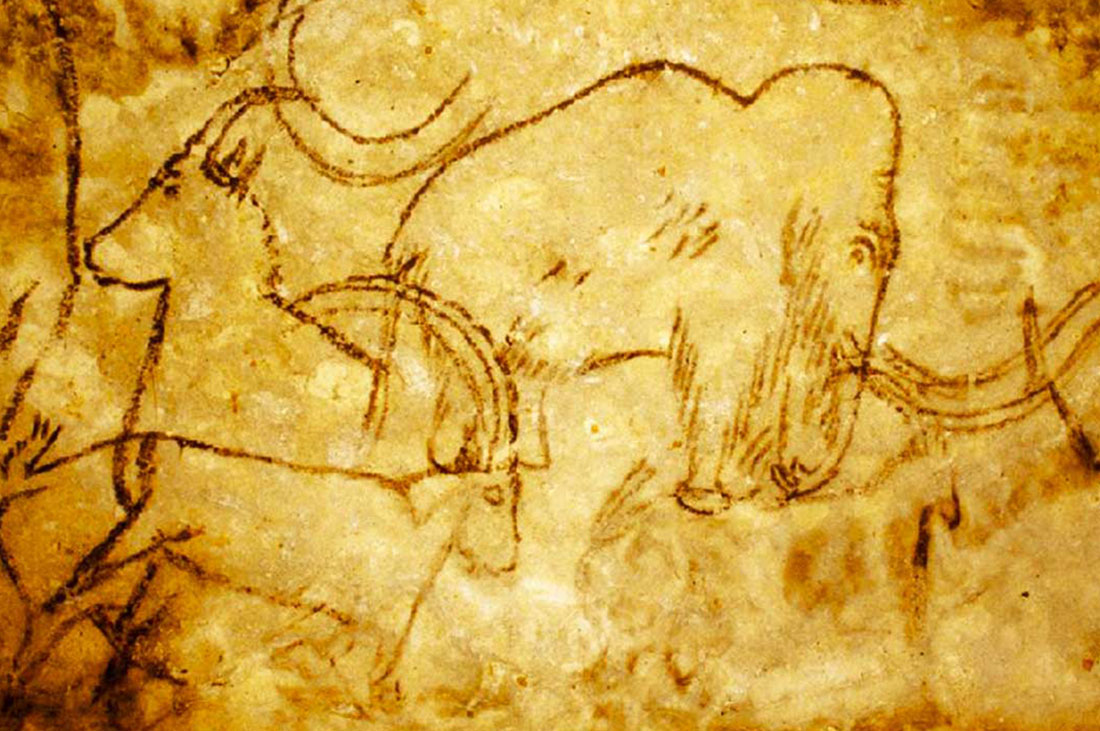
The nameless artists (and hunters, for that matter) have left us with drawings of buffalo, mountain goats, woolly rhinoceros, and mammoths. Rouffignac is of colossal historical and architectural value, and only part of the caves are open to the public who are driven through the galleries on a small electric train.
Gutmanis Cave
- Where: Turaida, Latvia
- Opening hours: March to November – 10 am to 4 pm, April to October – 9 am to 5 pm
- Entrance: Free of charge
- How to get there: local train service from Riga to Sigulda (€1.90) and then the local minibus service to Turaida (€0.60).
The Gutmanis Cave is considered the biggest in the Baltic region and was named after the doctor who used to treat the townspeople using the waters from the local spring. Many legends are associated with the cave, from pagan tales inspired by the cave’s majestic presence to actual, documented – and romantic – events. The most famous of these is the story of Rose of Turaida, a story which mixes fact with fiction. Rose of Turaida was known as the beautiful Maija, the adopted daughter of the keeper of the nearby castle. The young maiden had a suitor, the gardener, Viktor.
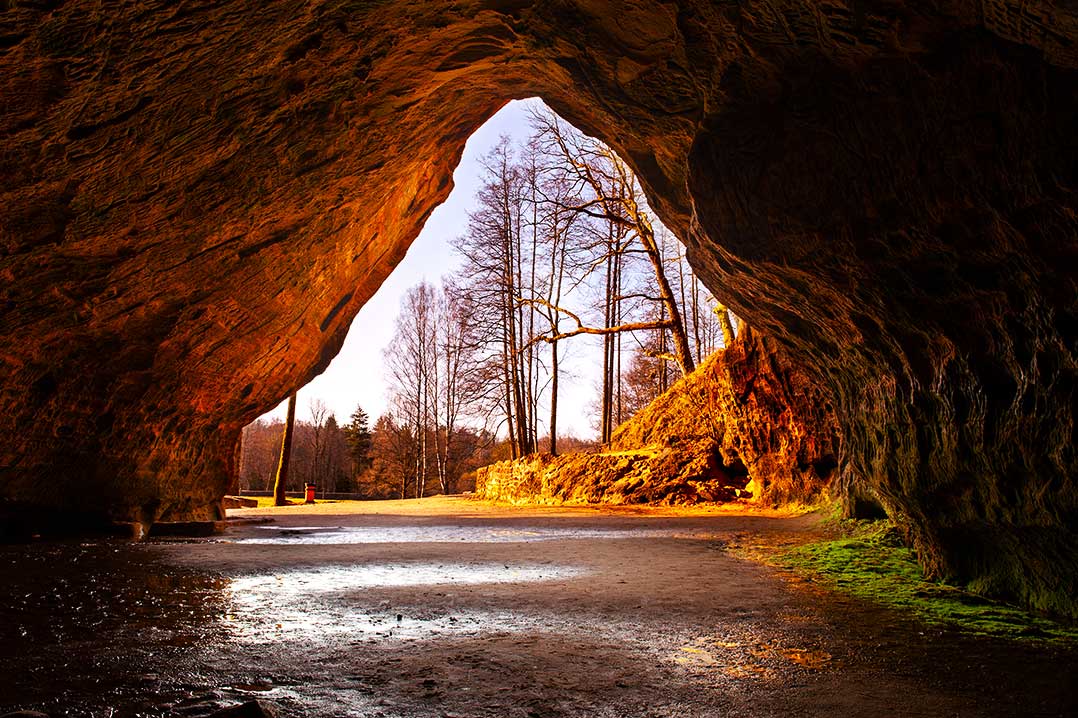
The young lovers would regularly meet near the caves. But also in love with Maija was the deserter Adam Jakubovsky, who could not accept her rejection of him. He sent her a letter in Viktor’s name asking her to meet him at the Gutmanis Cave. Maija rushed there but soon understood that she had been tricked. Jakubovsky tried to overpower her roughly, but she tricked him back by convincing him that the red silk scarf around her neck had magical powers and could withstand fire and sword.
Adam decided to test the power of the scarf and struck Rose of Turaida with his sword. The blow killed her outright, and she dies with the name of her faithful lover on her lips, never giving in to the sly rascal Adam. To this day, young lovers come to the caves and light candles in honor of the brave and loyal Rose of Turaida. The caves are close to the castle of Turaida, and it takes about 1.5 hours to get there from Riga.
Škocjan Caves
- Where: Matavun, Slovenia
- Opening hours: November to March, timed entrances at 10 am, and 1 pm, April and May at 10 am, 1 pm and 3.30pm, June to September from 10 am to 5 pm, and October from 10 am to 3 pm.
- Entrance: from €12.00 to €24.00 depending on the time of year
- How to get there: by train from Ljubljana to Divača (€11.00) and then by bus on to Matavun (€2.00).
The Škojan Caves are some of the best limestone karst systems anywhere in the world. People have lived in these caves since prehistoric times and settlements grew around them over thousands of years BCE. The Škojan caves re rich in rare and ancient plants and minerals. Their value is such that they are included as a UNESCO World Heritage Site.
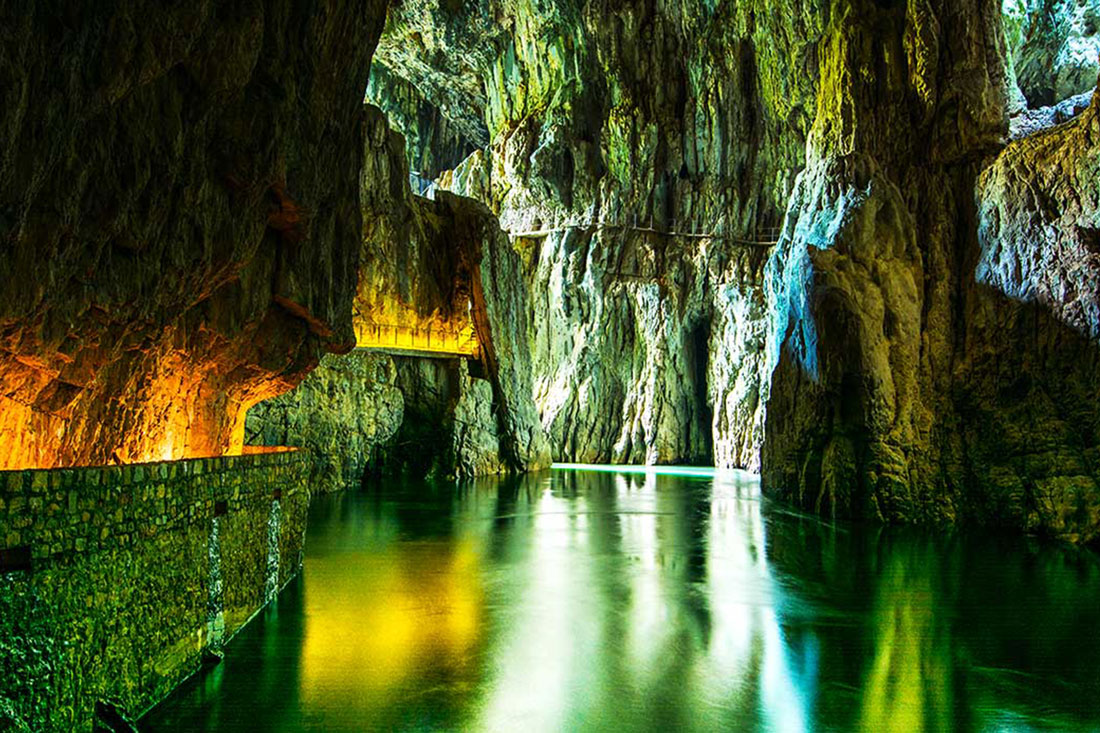
The Škojan Caves are made up of an enormous network of tunnels and caverns extending 6km underground. Some of the subterranean corridors have collapsed, forming pretty valleys and gorgeous waterfalls. The Caves are part of the Škojan Caves National Park, and visitors are admitted to a reinforced gallery with paved walkways.
A visit to the caves can make a pleasant change to a city break or beach holiday. As you can see, it’s a “three-in-one” win – you will see unparalleled beauty, find out lots of new things and get up close and personal to nature. It’s really worth a try.

